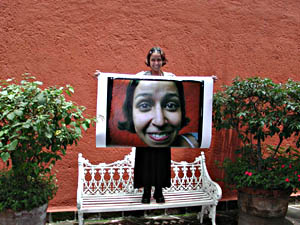| Back to MAGAZINE |
Digital
Corner
|
|
The
EPSON 3000Z vs NIKON's CoolPix 990 August 2000
But as we are speaking of manuals, a quick comparison between the two camera manuals, is very simple. EPSON must have hired professional people with a degree in writing and communications to do their manual, NIKON must have asked someone in their service department to write and design theirs. The EPSON manual makes me feel these people are on my side, the NIKON one conveys a sense that they just want me to get out of their way as quickly as possible.
If you expect an objective evaluation, you will be better served not reading on any further. However if you want to have some answers to such personal questions as, Should I buy this or the other camera? you might benefit from reading on. I have now owned several generations of different digital cameras, so I have a fairly good idea of the direction the technology is developing, and given that I use these cameras for my own work, their evaluation goes beyond listing specs of the cameras being reviewed. In short, I am most probably like yourself, less inclined to read about technical jargon, and more about the hands-on personal experience by someone who actually uses the stuff.
The next thing that I came across was the neck strap. By now I had taken the camera out of the box and was contemplating how to put the enclosed strap onto the camera ringlets that are on the side of the camera body. To my great surprise, I found that EPSON had taken special care to provide some fasteners that have a screw sleeve to close the fastener once you got the strap into the eyelet. So what has all this to do with photography? you will ask. I tell you, it has to do with how a manufacturer approaches the little details in the equipment they are selling you. I very much look at such clues for the attention of how the product is made, as that can tell me a lot about items I can not see inside the body. EPSON did not disappoint me. This camera is truly the outcome of a lot of very well-done homework. Look, the EPSON people even include with their camera, a ring adapter for extra lenses or filters (not included with the NIKON CoolPix 990), and a generous lens cap that comes along with a gracious message on the screen of your camera, asking you to take the lens cap off the lens in case you are stupid enough to have left it on (which happens more often than I am willing to admit). There is nothing of the sort on the CoolPix. The person in charge of resolving the interface on the EPSON camera could not have come up with a set of more logical icons, and good placement of buttons. Either he or she must think along the same lines as I do, since I found everything to be quite obviously well placed, or in fact, mine is not an isolated experience and a lot of people will coincide that EPSON's layout and iconic representation are so simple and evident that reading a manual is an afterthought in case one missed some important second layer of controls. I simply found everything where I imagined it could be, a far cry from my experience with the CoolPix 990. On some recent travels, I had to take along the manual for this NIKON camera, as constantly I had to access it to remind me of items I could not find or remember on the camera itself.
Yes, at the highest levels of image quality the speed drops down to a very slow 32 seconds between shots on the EPSON, but the NIKON seems to me to be even slower. The one biggest complaint I have against the CoolPix, is the annoying wait time between shots at all levels of quality. Yes I know that you can put these cameras into a continuous mode, but that suggests I keep my finger on the shutter and rattle off a series of images I do not necessarily want or need to fill the limited capacity of my memory disc. I want to be able to take a single picture when I want to, not when the camera has deigned to recover from its internal operations. Although neither camera does that well at the highest quality (the NIKON D1, -$4000.00 without lenses- does allow you to shoot off a series of single shots at highest quality with out any interruption). I start from the assumption that I as the photographer have to be in charge, not the equipment I am using. So both these cameras (CoolPix 990 & 3000Z) have their limitations, with the CoolPix 990 being by far the worse offender. One of the nicest things about the CoolPix 990, is its swivel screen which allows me to capture some very special angles, self portraits for instance, (something I wrote about elsewhere) which is not possible on the 3000Z due to its architecture, which is more attuned to the traditional look and feel of film-based cameras. However the 3000Z has some very useful features the CoolPix 990 does not have, for instance one can find a hot shoe for an additional external flash and something very unusual for a still camera, the possibility to record audio, items which are definitely missing in the latter. The software that comes with the EPSON 3000Z is quite wonderful. Especially if you work with a Mac. Everything for the Windows crowd is the same for the Mac followers. What is most inconceivable is that the software that NIKON sells separately for its top-of-the-line D1 camera (NIKON Capture), at $600 per copy, is by far not as good and clean as the software that comes free with the EPSON 3000Z. NIKON should be ashamed to provide such third rate software for its professional camera, even if it were free, but even worse at the outrageous prices they are charging, when the competition is providing such fine software as part of the camera one buys. I leave for the end the most important aspect of the cameras. The actual taking of pictures. In the literature and manuals that are being sent out with the EPSON 3000Z one can read that you can make a good print at 12 x 17 inches from the highest level of quality image file. Well, I have taken now some portraits at just the "high level " quality, not even the "highest", and then enlarged these pictures to the astonishing size of 36 inches wide by 25 inches tall. Everyone who has come through the studio and seen these prints was convinced that those images, printed with an EPSON 9000 printer, had been originally photographed with a film-based camera and then had the film scanned. No one could believe that the origin of those images was digital let alone the little 3000Z. None of the other cameras, not even the NIKON D1 or the CoolPix 990, have provided me with images that can stand such level of enlargement without serious pixelation becoming apparent. For me what counts the most is the empirical proof of something, these images came through with flying colors with an audience of professional eyes being very critical. Need I say more? The new EPSON 3000Z is a tremendous instrument for making serious digital pictures. The small size and light weight make it look deceptively modest in relation to what it can accomplish. It is definitely not a camera for photographers who want to show off their gear, this thing looks almost like a toy. The small size and very light body (even with batteries) are certainly a fantastic plus when you travel a lot and go to distant places, but not if you want to impress someone with the equipment you own. However if you want to show off the images you can make with this little camera, you certainly will have a pleasant experience. On the other hand, the CoolPix 990, is marginally heavier and a bit bigger. The only advantage that I find over the EPSON 3000Z model is, as I wrote earlier, the swivel back which allows for some very creative shooting. However I doubt that this is enough of a reason to sway me over from not leaving that camera behind on my next trip. Since I now own both models, my subjective preferences are to only use the CoolPix 990 selectively when there is a need for such diverse angles and to use the 3000Z for everything else. Up to now, I had thought that the CoolPix 990 would be the all around champion for cameras in its price range, but now with the EPSON 3000Z at hand the tables have changed and apparently we have a new winner. In this very competitive digital camera market, the life cycles of products are increasingly shorter, and what is true today is surely not going to be so for very long. NIKON and EPSON have a long-established reputation of being very competitive and talented producers, so the winner of today is not necessarily going to be the winner for a very long time. We have to stay tuned to how this field develops. Six or twelve months from now, who knows. And lets not forget there are plenty of other players around as well, maybe one of these will be giving us a big surprise further on. However, for now my choice is the EPSON 3000Z. Join our forum and share with us your opinions on this subject. Links for more information on the 3000Z from EPSON and the CoolPix 990 from NIKON
If
you want, you can buy these cameras at Amazon.com and support ZoneZero
|
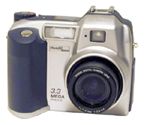
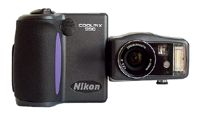
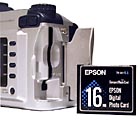 Most
reviews about equipment are for the most part a clinical recitation
of the specs that the manufacturer puts out in their press releases.
If any tests are conducted they are reported back to the reader with
the burning desire to be objective and thus fall short on every level
of interesting communications. Since I do not relate to my equipment
as a scientific device, but as a totally subjective piece of hardware,
one with which I live, I thus have to make this report along similar
lines of experience.
Most
reviews about equipment are for the most part a clinical recitation
of the specs that the manufacturer puts out in their press releases.
If any tests are conducted they are reported back to the reader with
the burning desire to be objective and thus fall short on every level
of interesting communications. Since I do not relate to my equipment
as a scientific device, but as a totally subjective piece of hardware,
one with which I live, I thus have to make this report along similar
lines of experience.
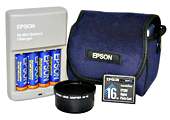 When
I opened the EPSON 3000Z box, the very first thing I came across wasn't
the camera itself but the batteries and the battery charger that comes
along with a set of NiCad batteries. Hey, those other guys (NIKON, for
instance) have you buy all these parts separately, they do not even
bother to offer some equivalent solution. They just throw a standard
set of Alkaline AA batteries into the box, leaving it up to you to find
out that there are more efficient solutions. I recall when I purchased
my first NIKON CoolPix camera, it took me weeks to figure out, and a
lot of money wasted on short-lived AA batteries, that rechargeable NiCad
batteries were actually the solution for such digital cameras, finding
a suitable charger was no easy task either. So when I encountered that
EPSON had actually made the effort to solve this issue with the power
supply and the batteries included right there from the start, I already
had a smile on my face.
When
I opened the EPSON 3000Z box, the very first thing I came across wasn't
the camera itself but the batteries and the battery charger that comes
along with a set of NiCad batteries. Hey, those other guys (NIKON, for
instance) have you buy all these parts separately, they do not even
bother to offer some equivalent solution. They just throw a standard
set of Alkaline AA batteries into the box, leaving it up to you to find
out that there are more efficient solutions. I recall when I purchased
my first NIKON CoolPix camera, it took me weeks to figure out, and a
lot of money wasted on short-lived AA batteries, that rechargeable NiCad
batteries were actually the solution for such digital cameras, finding
a suitable charger was no easy task either. So when I encountered that
EPSON had actually made the effort to solve this issue with the power
supply and the batteries included right there from the start, I already
had a smile on my face.
 The
EPSON 3000Z has like the CoolPix 990 (which I had considered up to now
as the very best model in its class) all the various options to take
pictures at various levels of image quality. From Basic to Hi…
and these at various levels of compression. So it is not only the size
of the file (height and width in pixels), but also how compressed the
image is going to land on your disc (and thus the ensuing pixel fall-out),
that figures into these choices. What surprised me the most was to see
how fast the 3000Z would allow me to take a picture, and then be ready
for the next picture, in contrast to my experience working with the
CoolPix 990 which even at the lowest quality level does not manage to
become instantaneous.
The
EPSON 3000Z has like the CoolPix 990 (which I had considered up to now
as the very best model in its class) all the various options to take
pictures at various levels of image quality. From Basic to Hi…
and these at various levels of compression. So it is not only the size
of the file (height and width in pixels), but also how compressed the
image is going to land on your disc (and thus the ensuing pixel fall-out),
that figures into these choices. What surprised me the most was to see
how fast the 3000Z would allow me to take a picture, and then be ready
for the next picture, in contrast to my experience working with the
CoolPix 990 which even at the lowest quality level does not manage to
become instantaneous.
